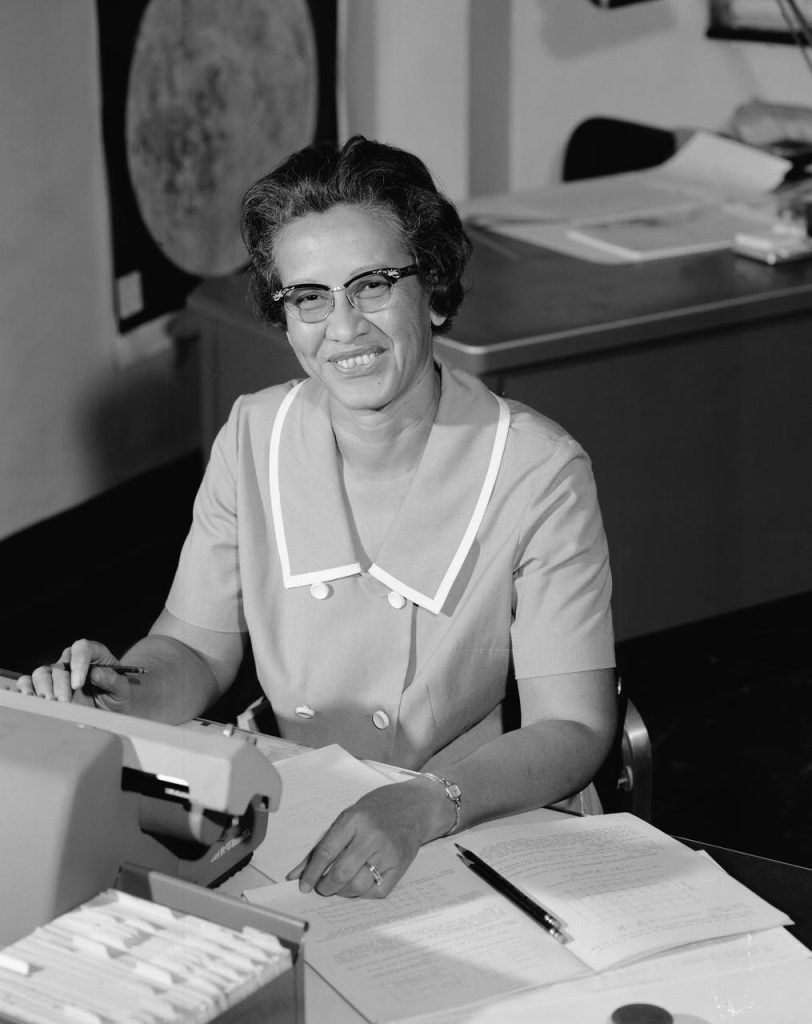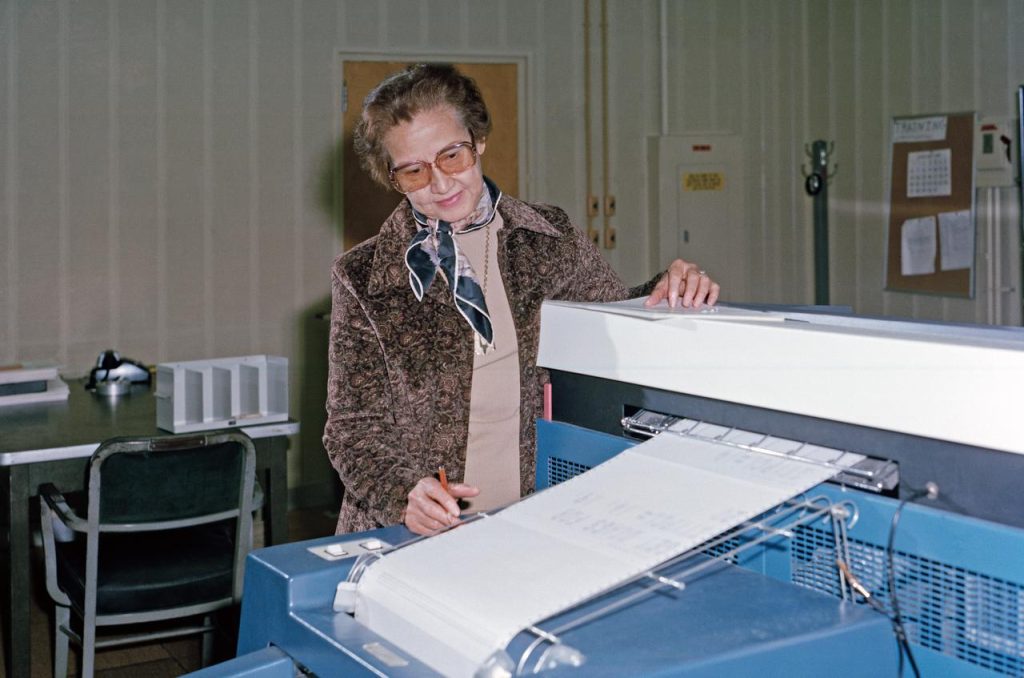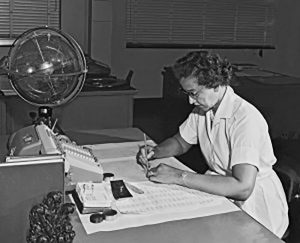There are so many amazing women working in science, technology, engineering, and mathematics (STEM) careers. In this series, we are shining a spotlight on a few of them. We hope you’re just as inspired by them as we are.
This month, we are highlighting NASA mathematician Katherine Johnson, who was instrumental to the early success of NASA. Johnson was a human “computer,” using math to calculate launch angles and trajectories for the early NASA spaceflights. She was instrumental in John Glenn’s first orbit of the Earth and worked for the space program for 33 years.
Who is she?
Born in White Sulphur Springs, West Virginia, in 1918, her intense curiosity and brilliance with numbers vaulted her ahead several grades in school. By 13, she was attending the high school on the campus of historically black West Virginia State College.
At 18, she enrolled in the college itself, where she made quick work of the school’s math curriculum and found a mentor in math professor W. W. Schieffelin Claytor, the third African American to earn a PhD in mathematics. She graduated with highest honors in 1937 and took a job teaching at a black public school in Virginia.
She joined the West Area Computing section at the National Advisory Committee for Aeronautics’ (NACA’s) Langley laboratory in 1953, working for the precursor to NASA.
Johnson’s life was featured in the book and movie, Hidden Figures.

What career does she have?
At some point in the 19th century, work as a computer became gendered. This was party to reduce costs. During inequitable times, women were paid far less for this essential work than a man in a similar role would be.
According to this Smithsonian Magazine article, “The National Advisory Committee for Aeronautics, or NACA (the precursor to NASA), hired several hundred women as computers at its Langley base in Virginia, the historian Beverly Golemba estimated. NACA and NASA were relatively progressive employers, paying the young women far better than they’d get in other forms of office work; they even employed married women with children.”
We will talk about Johnson’s specific contributions to NASA in a moment, but being a modern mathematician has changed quite a bit since then. To solve problems, mathematicians rely on statisticians to design surveys, questionnaires, experiments, and opinion polls for collecting the data they need. For most surveys and opinion polls, statisticians gather data from some people in a particular group. Statisticians determine the type and size of this sample for collecting data in the survey or poll.
Following data collection is analysis, which involves mathematicians and statisticians using specialized statistical software. In their analyses, mathematicians and statisticians identify trends and relationships within the data. They also conduct tests to determine the data’s validity and to account for possible errors. Some help write software code to analyze data more accurately and efficiently.
Mathematicians and statisticians present findings from their analyses and discuss the data’s limitations in order to ensure accurate interpretation. They may present written reports, tables, and charts to team members, clients, and other users.
Mathematicians and statisticians work in any field that benefits from data analysis, including education, government, healthcare, and research and development.

What impact did she make?
Engineers from those groups formed the core of the Space Task Group, the NACA’s first official foray into space travel. Johnson, who had worked with many of them since coming to Langley, “came along with the program” as the NACA became NASA later that year. She did trajectory analysis for Alan Shepard’s May 1961 mission Freedom 7, America’s first human spaceflight.
In 1960, she and engineer Ted Skopinski coauthored Determination of Azimuth Angle at Burnout for Placing a Satellite Over a Selected Earth Position, a report laying out the equations describing an orbital spaceflight in which the landing position of the spacecraft is specified. It was the first time a woman in the Flight Research Division had received credit as an author of a research report.
In 1962, as NASA prepared for the orbital mission of John Glenn, Johnson was called upon to do the work that she would become most known for. The complexity of the orbital flight had required the construction of a worldwide communications network, linking tracking stations around the world to IBM computers in Washington, Cape Canaveral in Florida, and Bermuda.
The computers had been programmed with the orbital equations that would control the trajectory of the capsule in Glenn’s Friendship 7 mission from liftoff to splashdown, but the astronauts were wary of putting their lives in the care of the electronic calculating machines, which were prone to hiccups and blackouts.
As a part of the preflight checklist, Glenn asked engineers to “get the girl”—Johnson—to run the same numbers through the same equations that had been programmed into the computer, but by hand, on her desktop mechanical calculating machine. “If she says they’re good,’” Katherine Johnson remembers the astronaut saying, “then I’m ready to go.” Glenn’s flight was a success, and marked a turning point in the competition between the United States and the Soviet Union in space.
When asked to name her greatest contribution to space exploration, Johnson would talk about the calculations that helped synch Project Apollo’s Lunar Module with the lunar-orbiting Command and Service Module. She also worked on the Space Shuttle and the Earth Resources Technology Satellite (ERTS, later renamed Landsat) and authored or coauthored 26 research reports. She retired in 1986, after 33 years at Langley. “I loved going to work every single day,” she said. In 2015, at age 97, Johnson added another extraordinary achievement to her long list: President Barack Obama awarded her the Presidential Medal of Freedom, America’s highest civilian honor.









